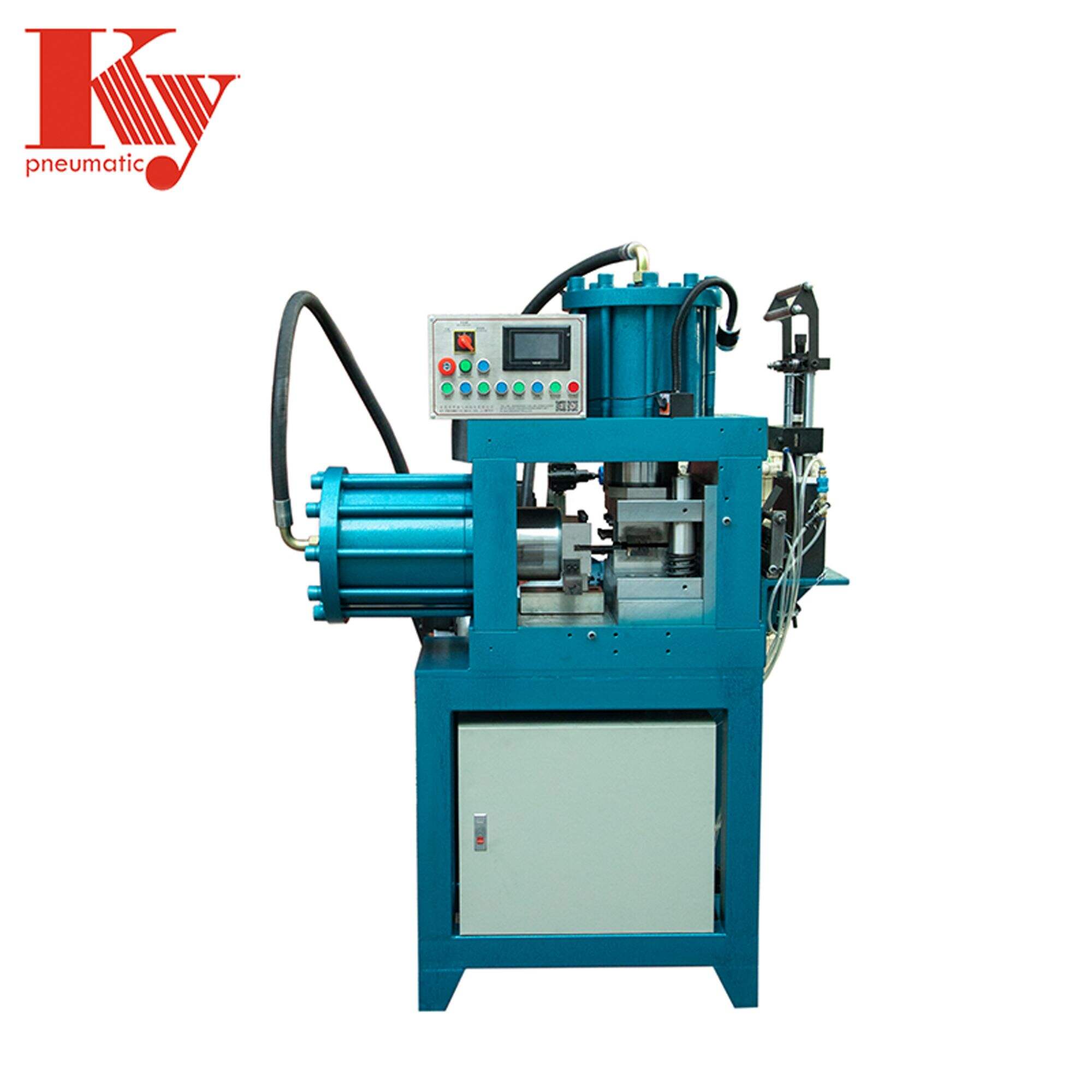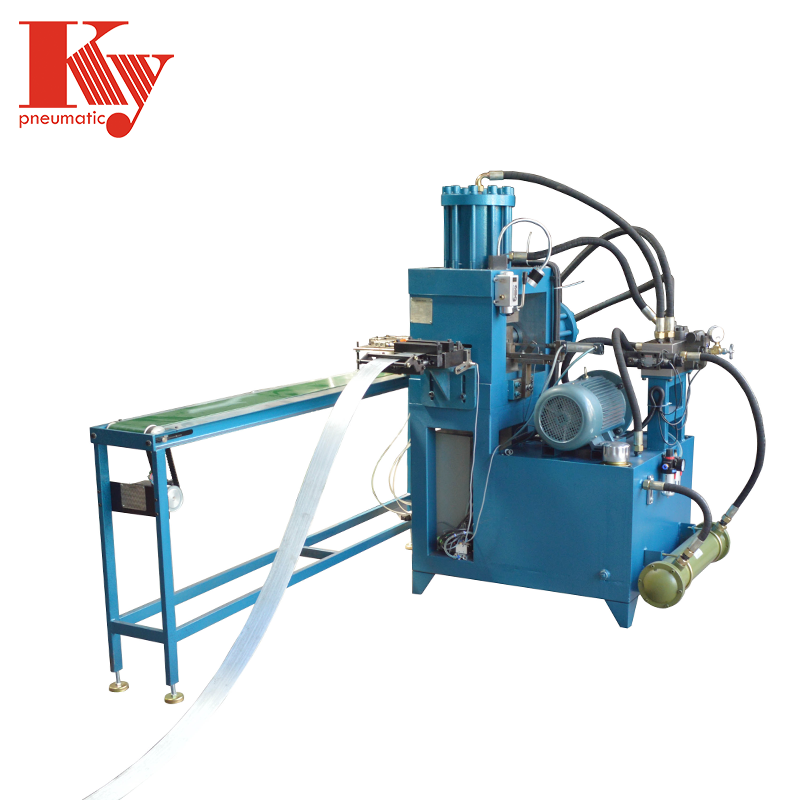Brad Nail Making Machine: A Guide
How Brad Nail Making Machines Transform Wire into Fasteners
Wire Feeding and Straightening Process
The process of transforming raw wire into brad nails begins with the wire feeding mechanism. This involves a series of rollers that guide the wire from a spool, ensuring a continuous and uninterrupted supply during production. The efficiency of this component is crucial for maintaining production speed, which is essential for high-output manufacturing environments. Once the wire is fed, it undergoes a straightening process using a combination of mechanical aligners and pneumatic systems. These systems work together to eliminate any bends or kinks in the wire. Straightening is a critical step that ensures the precision and quality of the final product, as even slight imperfections can affect the performance of the nails. Advanced machines enhance this process by incorporating sensors that monitor the position of the wire, allowing for real-time adjustments to maintain consistency and support high-speed operations.
Precision Cutting and Head Forming
Precision cutting and head forming are vital processes in nail production. Cutting mechanisms equipped with high-precision blades ensure the wires are cut to the exact length required for producing nails. This enhances the quality of the finished product by preventing defects associated with improper length. Head forming units then utilize dies to create the nail heads, which can vary in shape from flat to round, depending on the application. Some machines offer the flexibility to quickly swap between different designs, accommodating various product requirements. Furthermore, the integration of CNC technology into cutting and forming processes significantly boosts accuracy and reduces material wastage. This technological advancement not only improves the precision of the operations but also reduces operational costs by minimizing material loss.
Automated Quality Control Systems
Automated quality control systems play a pivotal role in ensuring that only high-quality nails proceed to packaging. These systems often employ vision technologies to check for defects in real time, detecting any inconsistencies before the nails move further along the production line. This automatic defect checking ensures compliance with both internal and industry standards, making sure that every nail meets the necessary quality criteria. The quality assurance process often includes stress and tensile tests, validating the durability and strength of the nails. Additionally, data collected from these quality control activities can be analyzed for trends, enabling manufacturers to implement continuous improvements. This proactive approach minimizes the rates of rework or scrap, thereby enhancing overall production efficiency and product reliability.
Key Advantages of Automated Nail Production
High-Speed Output: 100-160 Nails/Minute
Automated nail-making machines offer a groundbreaking leap in production efficiency by achieving speeds of 100 to 160 nails per minute. This high-speed output allows manufacturers to meet surging market demands effectively. Compared to manual methods, automated processes deliver nearly three times the output, making them a cost-effective and profitable choice for businesses. Furthermore, the enhanced efficiency helps firms rapidly scale operations to align with changing market trends.
PLC Control for Customizable Operations
The integration of PLC (Programmable Logic Controller) systems in automated nail production machines significantly enhances flexibility in manufacturing. Operators can adjust production parameters effortlessly, catering to different nail sizes and designs without the downtime seen in traditional systems. This capability ensures consistent product quality and maximizes machine effectiveness over time, empowering users to swiftly adapt to customer requirements.
Reduced Material Waste and Labor Costs
Automation in nail production not only boosts efficiency but also reduces material waste and labor costs. This is achieved through precise cutting and optimized resource utilization, leading to significant raw material savings. Studies highlight a reduction in labor costs by over 30%, as automation reduces the necessity for manual oversight. Consequently, businesses can redirect these saved resources to innovation and continuous quality improvement, further reinforcing their competitive edge.
Critical Features in Modern Nail Making Machinery
Durable Mold Designs for Longevity
Durability is a cornerstone in mold construction for nail-making machines, as molds are often crafted from high-tensile materials to ensure longevity and consistent performance even under high production rates. Regular tests and upgrades to mold designs can mitigate risks such as breakage and downtime, significantly improving production efficiency. Investing in industry-standard mold quality not only assures reliability but also enhances production output, marking it as a critical investment for manufacturers.
Automatic Lubrication Systems
Advanced nail-making machines are equipped with automatic lubrication systems, ensuring that all moving parts are consistently lubricated to reduce friction and wear. This feature extends the life and reliability of the machine, with some systems even allowing remote monitoring to optimize oil usage. Proper lubrication enhances efficiency and reduces energy consumption, positively impacting overall operational costs, which is vital for manufacturers seeking sustainable production practices.
Safety Mechanisms: Overload Protection
Safety mechanisms are integral to modern nail-making machinery. These machines incorporate overload protection features that automatically disable the equipment during mechanical faults, preventing operator injuries. This is complemented by safety protocols like emergency stop features and alert systems, ensuring compliance with health and safety regulations. Regular safety audits and maintenance checks are crucial to uphold these standards, protecting both workers and investments, and enforcing the machinery's reliability and safety in industrial settings.
Top Brad Nail Making Machine Models
T Brad Nail Making Machine: Precision for T-Series Nails
The T Brad Nail Making Machine is engineered with precision to cater specifically to T-series nails. It boasts highly accurate measurement adjustments, ensuring each nail produced meets stringent standards. User testimonials frequently praise this model for its efficiency and precision, particularly in high-volume production environments, enhancing customer satisfaction. The machine stands out in the industry as one of the best nail-making machines due to its cutting-edge technology and remarkable performance.
F Brad Nail Making Machine: Versatile F-Series Production
The F Brad Nail Making Machine is renowned for its versatility and adaptability, capable of producing a wide array of F-series nails accommodating different wire sizes with ease. Manufacturers frequently opt for this model due to its dependable performance and user-friendly operation, which considerably enhance production flexibility. Continuous research and development of this machine lead to innovative features that further align with specific industry needs for efficiency and effectiveness.
Auto Pneumatic Model: Dual-Operation Efficiency
The Auto Pneumatic Model brings dual-operation capabilities to the forefront, allowing seamless switches between nail types without production downtime. This model's pneumatic mechanisms ensure faster and more efficient nail production, a feature lauded in numerous user reviews and case studies. With constant technological advancements, this model epitomizes a major leap in automation, streamlining operations within the nail-making industry.
T/F Series Machine: Multi-Gauge Compatibility
Celebrated for its multi-gauge compatibility, the T/F Series Machine is a top pick among manufacturers seeking versatility and adaptability. This machine is tailored to meet diverse customer needs, as evidenced by market analysis, which showcases its widespread appeal across various market segments. Investments in this technology have repeatedly proven worthwhile as the demand for multi-gauge production continues to grow in the fastener industry.
Maintenance and Operational Best Practices
Routine Mold Inspection Protocols
Regular mold inspections are pivotal in preventing unanticipated disruptions in nail manufacturing. Identifying wear and tear early can save costs on repairs and downtime, safeguarding production reliability. Establishing a routine inspection schedule based on production volume enhances performance and extends mold life. According to industry guidelines, documenting each inspection and noting findings for future reference and accountability is recommended. This systematic approach ensures any potential issues are caught and addressed promptly, maintaining seamless production.
Optimizing Wire Feeding Consistency
Maintaining wire feeding consistency is crucial for reliable production rates and high product quality, as frequently discussed in industry forums. Wire characteristics and machine performance data should guide timely adjustments to feeding mechanisms. Optimal wire feeding settings not only improve manufacturing speed but also boost accuracy. These enhancements contribute to better overall efficiency, underlining the importance of attention to detail in wire management in nail making processes.
Utilizing OEM Technical Support
Leveraging OEM (Original Equipment Manufacturer) technical support can significantly boost your manufacturing operations. Access to the latest maintenance insights and best practices through OEM support can optimize machinery performance. Often, manufacturers provide exclusive training programs for operators, enhancing the effective and safe usage of equipment. Reports indicate that businesses utilizing OEM resources enjoy fewer operational disruptions, ensuring smoother production. This strategic use of OEM support can transform machine uptime into a competitive advantage.

 EN
EN
 AR
AR
 BG
BG
 CS
CS
 FI
FI
 FR
FR
 DE
DE
 EL
EL
 HI
HI
 IT
IT
 JA
JA
 KO
KO
 PL
PL
 PT
PT
 RU
RU
 ES
ES
 TL
TL
 ID
ID
 LT
LT
 SR
SR
 UK
UK
 VI
VI
 SQ
SQ
 GL
GL
 HU
HU
 MT
MT
 TH
TH
 TR
TR
 AF
AF
 MS
MS
 AZ
AZ
 KA
KA
 BN
BN
 LO
LO
 LA
LA
 MI
MI
 MN
MN
 NE
NE
 KK
KK
 UZ
UZ




